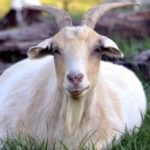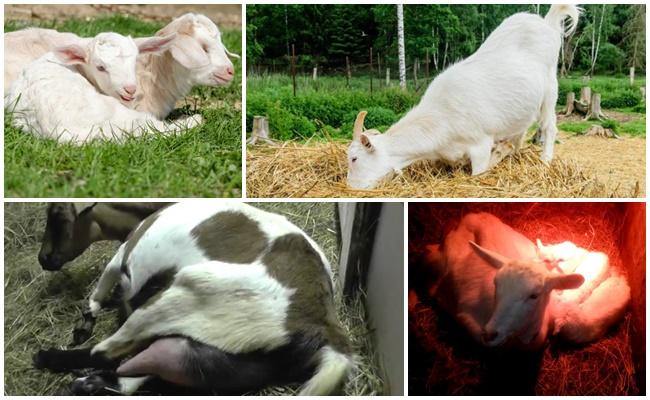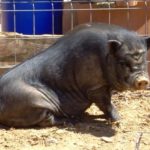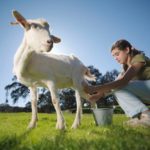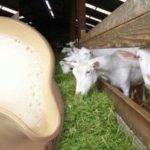The birth of goats does not always go smoothly, after which the animal may get sick. The causes of diseases are different, but, in any case, the pet needs timely treatment. If you leave everything as it is, many diseases can lead to serious complications and even death of the animal. Let's consider what to do if a goat does not get to its feet after lambing and why this happens.
Why does a goat fall on its feet and how to deal with it
The reason may be a violation of the metabolism of certain substances, infectious or traumatic diseases.Despite their different nature, their symptoms are similar in that the animal cannot rise to its feet due to paralysis of the muscles of the limbs or inflammation.
Metabolic disease
If the goat falls ill and her legs give out, this may be a consequence of maternity paresis. The disease occurs mainly in high-yielding animals that have already given birth (after the 3rd pregnancy). The cause of this condition lies in improper feeding, which leads to the body lacking calcium and glucose. Symptoms of the disease can be seen several days before lambing, during the birth of a kid and in the first time after birth. Overfeeding with grain, crackers, concentrates, and mixed feed causes paresis.
Signs of paresis are an uncertain, shaky gait, a decrease in body temperature, stopping chewing gum, and decreased skin sensitivity. Then, the very next day, the animal falls on its forelimbs, lies down, and cannot get up on its own. The head and neck are arched in the shape of the letter S, the goat is lying without moving, with eyes closed. Death can occur within 1-2 days after the onset of the disease.
Treatment must be prescribed by a veterinarian; no folk remedies will help. The animal is given calcium and glucose supplements by injection. To warm up and start the activity of the stomach and intestines, the goat is massaged on the back, legs and abdomen, and then covered with a warm blanket.
To prevent the development of paresis, 2 weeks before lambing and for a week after, you need to feed the goat with hay and branches, and do not give concentrates, crackers and cake. A week before giving birth, you are allowed to feed some chopped vegetables and fruits.
Deficiency affects bone tissue, from which they are washed out. Signs: thinning bones, loose teeth, brittle, dull hoof horn. Animals lick feeders, equipment, walls. Treatment is the introduction of premixes into the diet that contain the necessary mineral elements.
Traumatic diseases
Injuries and diseases of the limbs account for 15-20% of all diseases in goats. Signs: animals drag their feet, step cautiously, move on their joints, or completely fall on their feet. Joints and muscles may be hot, swollen, and painful.
If a pregnant or giving birth goat falls on its feet, the reason may be inflammation or rupture of muscles, sprains and ruptures of ligaments and tendons as a result of bruises, blows, falls, or the development of chronic diseases - bursitis, arthritis, rheumatism. Inflammation of the hooves caused by improper care can also cause the goat to fall on its feet due to the fact that it is painful for it to rest on the hoof.
Infectious diseases
Necrobacteriosis is a disease of bacterial nature; pathogens affect the hoof horn, skin and mucous membranes, and sometimes internal organs. The hoof horn becomes inflamed and peels off, causing pain. There may be pus inside, and the joint above the hoof is swollen and hot. The goat does not run, but keeps its leg bent.
Hoof rot is a chronic bacterial disease manifested by inflammation of the hoof, local fever, redness, and hair loss at the site of the lesion.
Exudate is released from the hoof, and the hoof horn peels off. cat goat At first he limps, then he cannot stand on his leg, he transfers his weight to his healthy one. If more than one limb is affected, the animal lies with them stretched out or tucked under itself.Treatment consists of local treatment: you need to wash the wound and remove the pus. The animal is given antibiotics – sulfonamides – internally.
Preventive actions
To prevent metabolic diseases, it is necessary to give goats more hay and branches during pregnancy, less concentrates and succulent feeds, and ensure that the diet is balanced in mineral elements and vitamins.
Other problems are prevented by proper and systematic care of animals. The goat shed needs to be cleaned every day, ventilated, and disinfected the walls, floor, and equipment at least 2 times a year. Vaccinate animals against the most common diseases. Let him go for a walk every day.
If a goat falls on its feet after giving birth and does not get up, it cannot be left without attention. She needs immediate help. In some cases, the livestock breeder himself can help, in others, only a veterinarian.



